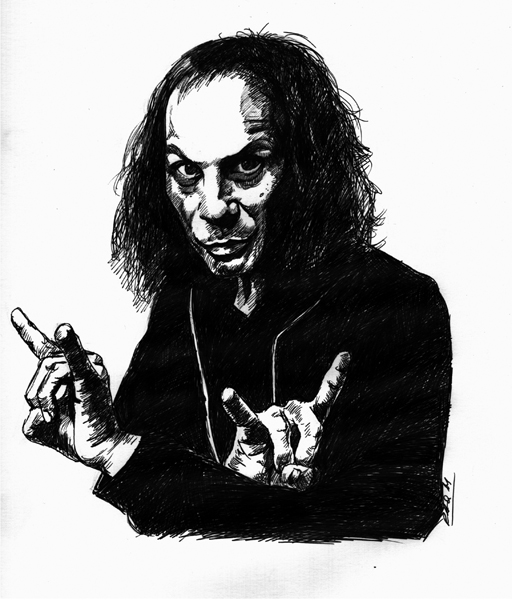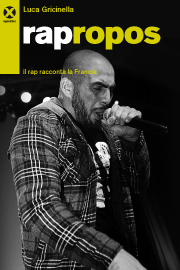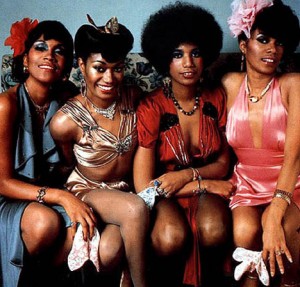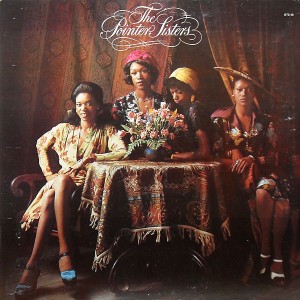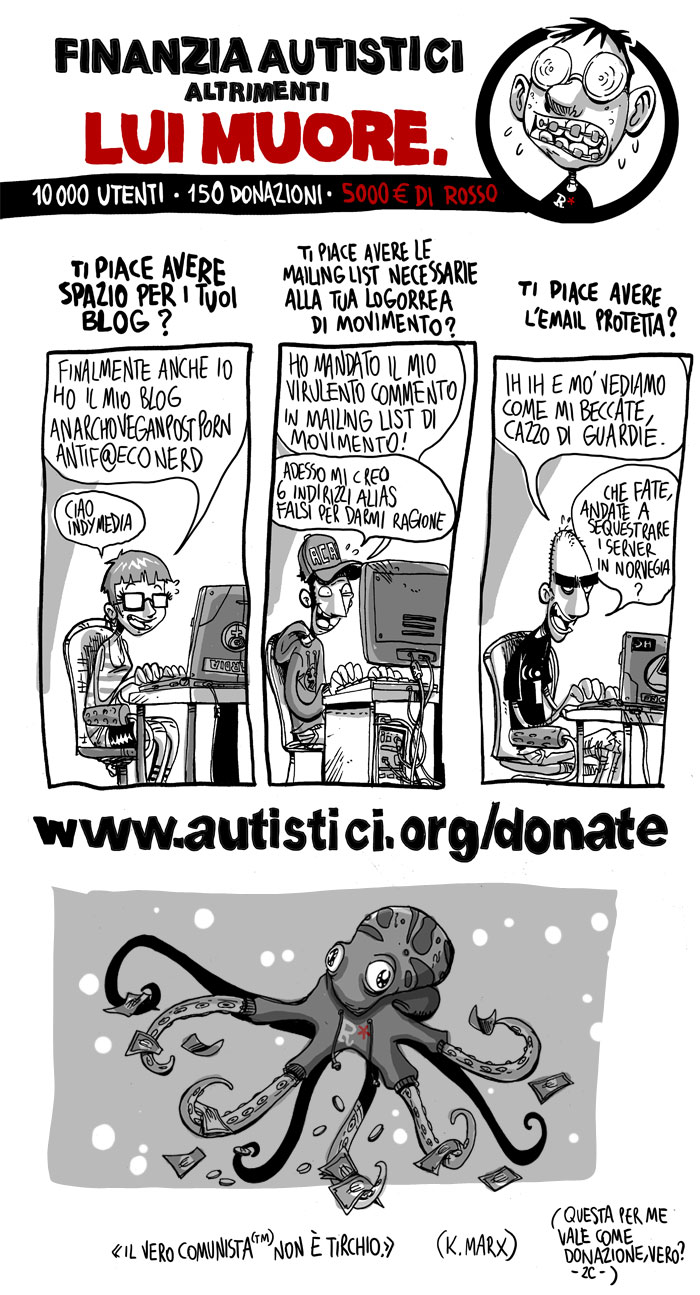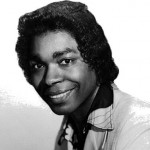The History Of Rap: Vol. 1: The Genesis
(liner notes by Kurtis Blow)
The History Of Rap: Vol. 1: The Genesis
In the early 1970s a musical genre was born in the crime-ridden neighborhoods of the South Bronx. Gifted teenagers with plenty of imagination but little cash began to forge a new style from spare parts. Hip-hop, as it was then known, was a product of pure streetwise ingenuity; extracting rhythms and melodies from existing records and mixing them up with searing poetry chronicling life in the ‘hood, hip-hop spilled out of the ghetto.
From the housing projects hip-hop poured onto the streets and subways, taking root in Bronx clubs like the Savoy Manor Ballroom, Ecstasy Garage, Club 371, The Disco Fever, and the T-Connection. From there it spread downtown to the Renaissance Ballroom, Hotel Diplomat, the Roxy, and The Fun House. It migrated to Los Angeles, where a whole West Coast hip-hop scene developed, sporting its own musical idiosyncrasies, its own wild style.
Through television shows like BET’s Rap City and Yo! MTV Raps and a succession of Hollywood movies, hip-hop gained millions of new fans across America, in places far removed from the genre’s Bronx roots. It spread to Europe, Asia, Africa, and nearly every continent on Earth, gaining more cultural significance as the years rolled by. Today it is one of the most potent and successful musical forms of the 20th Century.
Hip-hop is the voice of a generation that refused to be silenced by urban poverty, a local phenomenon fueled with so much passion and truth it could not help but reach the entire world. Like every musical genre that came before, hip-hop has its pioneers, artists who were essential in defining and popularizing the art form. This CD series showcases those legendary artists — their songs and their enormous talents — who created what today is known as rap.
The History Of Rap. How can we truthfully tell this story? There are so many different versions. Who is correct? There were approximately ten different pioneers, each of whom stakes a claim as the originator: Pete DJ Jones, Kool DJ Herc, DJ Hollywood, Eddie Cheeba, “Love Bug” Starski, Grand Master Flash, Afrika Bambaataa, Kurtis Blow, the Sugarhill Gang, Run DMC.
The names fit together like pieces to a puzzle. And as we assemble the puzzle, we have to give equal props to all, because it is the individual contributions, pieced together, that explain the true history of this billion-dollar-a-year phenomenon.
To understand the history of rap, you need to know two things:
1. Rap is talking in rhyme to the rhythm of a beat.
2. Hip-hop is a culture, a way of life for a society of people who identify, love, and cherish rap, break dancing, DJing, and graffiti.
In the early ’70s, when I was about 13 or 14 and disco was monopolizing the mainstream airwaves, the rap movement was just being born. A man by the name of Pete DJ Jones was about the most notable DJ during those early days. To me he epitomized the true meaning of a DJ. He had the precise timing necessary to enable the partygoer to dance nonstop while keeping the break of a record playing continuously. He had a clean mixing style and an excellent sound system.
I remember seeing Pete at a club called McCoys on 43rd Street and Third Avenue (midtown Manhattan) in 1972. I was 13 then and got in the club by using a phony ID. What I experienced that night was something that not only changed the course of my life, but also would eventually revolutionize the music industry. Pete was New York’s #1 DJ. He had an MC named JT Hollywood (not to be confused with DJ Hollywood, who came on the scene around 1973), who was the first real MC I can remember. (During those early days an MC was the master of ceremonies — the host of the party, show, or gathering. He told the crowd where they were and the DJ’s name. He motivated them to have a good time.) What really knocked me out about JT Hollywood that night was when he said to the people, “If you want to have a good time tonight, somebody say ‘Oh Yeah.'” The crowd of 1,000 responded by shouting, “Oh Yeah!”
Pete DJ Jones became my hero, and I followed him everywhere. I studied him, his style, his playlist, his MCs: JT Hollywood, JJ the Disco King, and the great “Love Bug” Starski. I followed him to all of the big midtown black clubs: Nell Gwynn’s, Pippins, Nemos, Justine’s, Ipanemas. I became a Pete DJ Jones follower and a DJ myself later on that year.
The teenagers of the South Bronx and Harlem didn’t have the money to pay for admission to the expensive midtown and downtown clubs, so they had their own parties. Along the way, clubs, house parties, and block parties sprang up all over New York ghettos, giving birth to the neighborhood DJ and MC. Something of a mutation of disco, hip-hop was also a rebellion against disco.
Kool DJ Herc, the godfather of hip-hop, was a Jamaican-born DJ who moved to the Bronx in 1967. With his unique playlist of R&B, soul, funk, and obscure disco, Herc quickly became the catalyst of the hip-hop way of life. The kids from the Bronx and Harlem loved his ghetto style, which gave birth to the concept of the B-Boy. The B-Boy — or beat boy, break boy, Bronx boy — loved the breaks of Kool Herc, and as a result soon created break dancing. These were the people of the hip-hop culture. While Pete DJ Jones was #1 for the black disco crowd in NYC, Herc and the B-Boys were the essence of the hip-hop movement, because of they lived the lifestyle. The way they danced, dressed, walked, and talked was unique, as opposed to most of the disco artists and fans of the time, who were not as in touch with the urban streets of America.
The B-Boy crowd was different from the middle class blacks who were represented at Pete DJ Jones’ parties. There was no dress code at a B-Boy party; we were younger and wore tennis shoes, jeans, mock necks, Playboys, Kangols, sweatsuits, etc. I remember many weekends going downtown to 43rd Street and Lexington Avenue to Nell Gwynn’s on Friday night to check out Pete DJ Jones, and then traveling uptown the following night on the Number 4 train to the Bronx to check out Kool Herc at the Executive Playhouse. I was torn between these two DJs. I’ve had many debates about Pete DJ Jones’ precise timing and Kool Herc’s playlist. Songs like:
“Give It Up Or Turnit A Loose (In The Jungle Groove Remix)” by James Brown. This is the national anthem of hip-hop. Every B-Boy, MC, rapper, DJ, rap group, break-dancer, and aerosol artist knew this song, and when it was played at a party or club, everyone knew it was time for the best B-Boys to do battle. Definitely the highlight of the night.
“Get Into Something” by The Isley Brothers. Many people remember The Isley Brothers for their ballads, but this song has a drum break that is incredible. Excellent for the B-Boy break-dancer in you.
“Melting Pot” by Booker T. & The M.G.’s. This song is one of my favorites. The jazz feel epitomizes what hip-hop is all about. You’ll love this one.
“Listen To Me” by Baby Huey. A strictly underground song for real B-Boys and Kool DJ Herc fans. Strong intro with strong R&B tracks.
“Scorpio” by Dennis Coffey & The Detroit Guitar Band. This song was a big national hit in 1971. Very funky and with an incredible break as well. Young MC used it in “Bust A Move” as did LL Cool J in “Jingling Baby.”
“It’s Just Begun” by The Jimmy Castor Bunch. The song’s intro is probably its most popular part: “What we’re gonna do right here is go back — way back.” Check out the guitar solo and the break.
“Apache” by Michael Viner’s Incredible Bongo Band. This is one of the records Kool DJ Herc brought over from Jamaica. A calypso hip-hop feel with incredible percussion breaks. Also check out the guitar line that the Sugarhill Gang pilfered in their version of the same song.
“Hum Along And Dance” by The Jackson 5ive. Only a real B-Boy or a hard-core Jacksons fan would know this song. It may seem unbelievable that Michael Jackson contributed to the creation of hip-hop, but if you don’t believe me, check out how funky this song is.
“Love The Life You Live” by Black Heat was another of my B-Boy favorites. This song has the most incredible break for your power moves. Many people know the original by Kool & The Gang, but this version is for the real B-Boy.
“Theme From S.W.A.T.” by Rhythm Heritage. Pete DJ Jones loved to cut up the break of this song whereas Kool Herc couldn’t quite pull it off. Remember the TV series S.W.A.T.? We’re going way back here….
“Dance To The Drummer’s Beat” by Herman Kelly & Life actually came out during the end of Kool Herc’s reign. Hollywood, Eddie Cheeba, Starski, and Flash made it popular in the late ’70s. There is a great percussion break that became very popular, enabling the DJ to show his skills.
“King Tim III (Personality Jock)” by Fatback was the first rap record. King Tim III was a rapper from Harlem who got a break by landing a job with old school dogs of funk Fatback. He would rap during the band’s musical breakdowns, entertaining the crowd with call and response. When it comes to giving credit for making the first rap record, people get amnesia. I remember him — he deserves the credit.
It is mandatory to express the importance of these songs. You have to understand that disco music was the hottest thing out — it was a craze that infiltrated all of American society. We were the rebels who couldn’t relate. We weren’t going for it. These songs represent our attitude. They feature strong R&B dance tracks, some with roots in Jamaica and Africa (via Kool DJ Herc). These are 12 of my favorites out of about 100. I love the breaks of these songs — they enabled the B-Boys to get off their best moves, creating a circle of people around them who would watch amazed as the best would battle in dance. I was one of those B-Boy dancers and one of the best in Harlem. I loved to travel up to the Bronx and battle with the Herculoids (Kool Herc followers): The Nigga Twins, Clark Kent, D.ST, DJ Coke La Rock, etc. When I went to Pete’s gigs there was rarely any competition, except for when I battled Dancin’ Doug from the Polo Grounds for the crown of Harlem. I lost that night at Nell’s, so I think I was about the second best B-Boy in Harlem. What a feat — ugh — I mean defeat! But as for Kool DJ Herc (my other hero) and the Herculoids, they blasted NYC with a trend that soon became a culture for all the world to embrace. (Did you know I changed my name to Kool DJ Kurt for a while in 1976?)
DJ Hollywood was the first rhythmic disco rapper. Unlike Herc he was not confined to the South Bronx. He would DJ downtown, midtown, and throughout the five boroughs of New York City — although he gained his fame at Club 371 in the Bronx. His flyers read: “Featuring the Golden Voice of DJ Hollywood.”
Hollywood was mainstream disco, but he was also the first DJ to interweave that sound with rhythmic rap as we all know it. And unlike the DJs and MCs before him who were basically like radio announcers generating crowd participation, Hollywood put raps together in rhythm with chants — with eloquent, simple rhymes and a lot of crowd response. “Everybody scream!” was his house-rocker, and “Throw ya hands in the air!” became a chant heard at concerts around the world.
In 1975, ’76, and ’77 Hollywood became New York’s #1 DJ and, space permitting, could draw up to 2,000 people on any given night. During that time Club 371 became the #1 club in the city. I remember going there back in 1977. The lines wrapped around the block. It was impossible to get in if you didn’t have the juice. Luckily I knew Reggie Wells, the club’s musical director, who went to CCNY with Russell Simmons and I.
As with Pete DJ Jones and Kool DJ Herc, not only did Herc and Hollywood dislike one another, but neither recognized nor respected the other’s contributions. For the most part, even their fans were different. The B-Boys were from the ghetto, while disco was for the middle class and the rich. But there was hip-hop in both worlds. It was the hip-hop tug-o’-war — disco rappers versus the B-Boys.
DJ Hollywood became another hero of mine because of his great voice. The man had style and class. DJ Junebug, the DJ behind Hollywood, was just as exceptional as Pete DJ Jones and Grand Master Flash. Tragically, he was murdered in the early ’80s. God bless you, DJ Junebug.
Grand Master Flash (Joseph Saddler) earned his name with his speed on the turntables. He rose to legendary status in the world of hip-hop right as Kool Herc’s reign was ending. A B-Boy to the extreme, Flash’s DJ style took Herc’s playlist to the next level. He was the first (even though some say it was the Grand Wizard Theodore) to utilize “scratching” and “cutting” — taking two records and keeping the break repeating continuously — thus rearranging the song and creating an extended instrumental groove over which the MC or rapper could entertain the crowd with raps. Flash studied the techniques of Kool DJ Herc, Grandmaster Flowers, Maboya, Plummer, and Pete DJ Jones. But it was Flash’s desire to emulate Pete’s style while playing the “antidisco” music favored by Herc that led to his turntable experimentations — and took hip-hop to the next level.
In 1974 Flash began playing parties in the neighborhood and gained quite a reputation for rocking the house. Two years later he teamed up with rapper Keith Wiggins, who soon became known as Cowboy, and the pair rocked parties throughout the South Bronx. (Note: Flash, a B-Boy, did not play the same circuit as Hollywood, a disco rapper, but they were both hot at the same time.)
In 1976 Flash and Cowboy were joined by Melle Mel (Melvin Glover), Kidd Creole (Nathaniel Glover), Mr. Ness — aka Scorpio (Eddie Morris) — and later Rahiem (Guy Williams). Who knew then that they would become the premier rap group of the early ’80s? Grand Master Flash & The Furious 5 went on to gain immense recognition in the recording industry with several hit records.
I didn’t get a chance to experience Flash until late ’77, because I was a DJ and an MC myself, doing disco shows in and around New York. When I did see him perform at the Hotel Diplomat, there was a spotlight on his hands. He had rings on every finger, and the reflection of the spotlight on his rings made it seem as if his hands were sparkling as he cut up the beats. He was a most incredible DJ; he inspired me to get back to the B-Boy school of hip-hop. So it was a dream come true when I finally got the chance to work with Flash & The Furious 5 in 1978. We were called Grand Master Flash & The Furious 7 (Kool Kyle was the seventh MC).
Afrika Bambaataa is a bona fide hip-hop legend. He is affectionately known as the grandfather of hip-hop, having been a part of the movement since 1972. The former gang leader of the Black Spades, Bambaataa is the founder of the Zulu Nation, an organization dedicated to peace, love, and unity. The Zulu Nation is said to have worldwide membership of more than 400,000, including some of rap music’s brightest stars. Celebrated master of the beats, Bambaataa is known to have more than 25 crates of records! His 1982 hit, “Planet Rock,” is still a highly sampled reference standard.
I have talked about Flash and Bambaataa in Volume 1 because they were influential during these early days. Since their records actually came out later, I will mention them in the next volume as well. Also, Run DMC and I will be mentioned in Volumes 2 and 3 although we were significant back in these early days as well.
There were many MCs, groups, and DJs who participated during the beginning of rap, and they should not go unrecognized. This “family tree” traces their lineage:
Chart #1: The Early to Mid-’70s
In the beginning there was rhythm…until something else emerged from New York City’s South Bronx: a rougher, rowdier spin on funk innovators like James Brown, George Clinton, Marvin Gaye, and Sly Stone. Rap. Based on the fundamentals of “beats” (copped off other people’s records) and “breaks” (assisted by a turntable and some discreet crossfading), the MCs’ contrasting delivery styles soon split along two camps: Disco and B-Boys.
Disco: Appealed more to black disco crowd and stressed crowd response over actual rhyming.
Pete DJ Jones — New York’s #1 DJ, c. early ’70s. His mixing style and sound system kept ’em moving with MCs the Disco King and JT Hollywood.
DJ Hollywood — c. 1974. One of the genre’s early top New York DJs; assisted by DJ Junebug, who was murdered in the early ’80s. Key record: “Hollywood’s World.”
Eddie Cheeba — New York’s #1 DJ, c. 1975-77, earning $2,000 a night.
“Love Bug” Starski — Goes back to the days of Pete DJ Jones. His career peaked in the mid to late ’70s. Kurtis Blow: “The only guy I ever saw who could play to both crowds. Nobody could mess with ‘Love Bug’!” Key record: “Gigolette.”
Early Originators:
Plummer
Maboya
Grandmaster Flowers (supported James Brown at Yankee Stadium).
All came in Jones’ wake as disco DJs/MCs
Kurtis Blow — né Walker; Kool DJ Kurt, c. 1976.
Felt drawn to both camps for different reasons: “When I saw Pete [DJ Jones], I realized it didn’t have to be one or the other.”
B-Boys: More in touch with the streets than their counterparts. Favored a tougher, rapid-fire rhyming approach.
Kool DJ Herc — “The godfather of hip-hop”; despite his slight rhyming skills, his massive stature and sound system inspired such followers as…
“Herculoids”
Afrika Bambaataa — Founded modern B-Boy style. Ex-Black Spades gang leader’s 26 record crates made him a topflight DJ.
Grand Master Flash — “Herculoid” who created his own aggressive turntable style. As Raheem notes: “To see Flash at that time, you’d be in awe. He’d catch [a record] in the air…handcuffed!” Accompanied by “Cowboy” Keith Wiggins, one of rap’s first certified MCs, Flash formed Future Players. Often strapped for cash, they didn’t seem strapped for acts, as attested by earlier efforts.
Paul Winley — Issued two Bambaataa 12-inch singles in 1980, including “Zulu Nation Throwdown.”
Bobby Robinson — Enjoy Records (1979-82). Debuted Flash and crew (“Superrappin'”) and Funky 4 + 1, which included future Furious Fivester Raheem, among others.
Sylvia Robinson, Joe Robinson, Joey Robinson Jr. — Family-run Sugar Hill took over when Bobby Robinson of Enjoy Records dropped out of the scene.
Russell Simmons — Then a local promoter (c. 1979-80), just taking it all in….
CHART #2: 1979-’84
Why is it so difficult to sort out hip-hop’s maze of claims, counterclaims, and contradictions? Nobody worried about documenting what remained essentially a local scene, nor the diehard separation between the B-Boy and disco camps, which never acknowledged each other’s contributions. With the success of Kurtis Blow’s “Christmas Rappin'” (1979) and “The Breaks” (1980), along with “King Tim III (Personality Jock)” (Fatback, 1979) and “Rapper’s Delight” (Sugarhill Gang, 1979), the original categories evolved into “just plain ol’ rap!” as Kurtis would have it.
Grandmaster Caz — His rhymes are said to have provided the backbone of rap’s (and Sugarhill’s) first big hit….
Sugarhill Gang — Michael “Wonder Mike” Wright, Guy “Master Gee” O’Brien, and Henry “Big Bank Hank” Jackson. “Rapper’s Delight,” “8th Wonder,” “Apache,” “Funk Box.”
The Treacherous Three — “Feel The Heartbeat”
Grandmaster Melle Mel & The Furious Five — “White Lines (Don’t Do It),” “Jesse.” Recruited new members and kept group’s name for two years following the ’83 split.
Sugar Hill Records
Rahiem: “The way they were able to get records on the street — that was amazing! If we cut that week, the record was on the street next week.”
Spoonie Gee — “Monster Jam,” “Spoonin’ Rap,” “Spoonie Is Back”
The Sequence — Angie B, Cheryl the Pearl, Blondie. “Funk You Up,” “Monster Jam,” with Spoonie (well, what else would you call it?)
Grand Master Flash & The Furious 5 — “The Message,” “Freedom,” “It’s Nasty (Genius Of Love),” “New York, New York”
Flash — Went to Elektra with Raheem and Kid Creole
Rahiem — “Reflecting back, ‘Message II (Survival)’ and ‘New York, New York’ should have been on The Message album. That wasn’t in our foresight, and I guess it wasn’t in Sylvia’s either.”
Remained rap’s preeminent group until discontent with their label, and internal dissension, led to court battle, then split into rival camps. Rahiem: “I remember one Christmas ‘The Message’ had been out a few months, and we were expecting some kind of money, and when it didn’t happen, I remember the group pitching a bitch about it. When I say ‘divided,’ we were divided over our decisions, and when I say ‘conquered,’ we were conquered…over money. In the music business, you don’t get what you deserve — only what you negotiate.”
Kurtis Blow — Early successes led to supporting Bob Marley and the Commodores on tour and management by Russ Simmons. Russell’s younger brother Joey Simmons (Run) broke his arm, so he couldn’t DJ for Blow in 1980. No matter; Blow produced Joey’s crew as well as the Fat Boys, who both reaped considerable benefits from Kurtis’ guitarist, Larry Smith, and multi-instrumental DJ, Davy DMX!
Run DMC — “It’s Like That,” “Sucker MCs,” “Rock Box”
Fat Boys — né the Disco Three, c. 1983. “The Human Beatbox” Darren “Buff” Robinson (died of cardiac arrest in ’95), Mark “Prince Markie Dee” Morales, Damon “Kool Rock-ski” Wimbley
Afrika Bambaataa — “Planet Rock,” “Funk You,” “Renegades Of Funk,” all smashes on Tommy Boy Records.
Mr. Biggs
Pow Wow
MC G.L.O.B.E.
Jazzy Jay — producer, “Jazzy Sensation”
“Love Bug” Starski — “At The Fever”/”You Gotta Believe,” 1983
Rob Base & D.J. E-Z Rock — “It Takes Two”
Whodini — “Friends”
UTFO — “Roxanne, Roxanne”
Juice Crew — Roxanne Shanté, M.C. Shan, Biz Markie, Big Daddy Kane. All off to solo careers.
Chart #3: 1984-Present
The mid- to late ’80s marked a new reality: East meets West, with the new, California-based breed seemingly taking their counterparts to the cleaners, businesswise and saleswise. For example, Ice-T’s earliest pressing deal with Macola Records guaranteed him 50 percent for every 12-inch record sold. N.W.A.’s main men, Dr. Dre and Ice Cube, have expanded on that capitalism to form their own production companies, labels, and spinoff ventures (has anybody forgotten the Wu-Tang Clan’s “Wu Wear” yet?). Artistically, the genre split into “hard-core,” with political and social commentary versus the in-your-face “gangsta” acts, who have earned razzes from Democrats and Republicans, critics, old-school acts, educators, and parent groups alike. “Music is always a reflection of where we are,” quoth Rick Rubin. Indeed, what else is new?
West Coast
Duffy and Jerry Hooks — Made first inroads with their 1981 “Gigolo Rapp” 12-inch.
L.A. Dream Team
The Egyptian Lover
Toddy Tee & Mixmaster Spade
Kurtis: “They did the first sing-rap, like Domino does…”
Ice-T
Widely regarded as the creator of the “crime rhyme”; early records like “6 In The Morning” and movie roles (Breakin’ 2: Electric Boogaloo) paid off big in the studio. He hasn’t looked back after the rough 1987’s Rhyme Pays and landmarks like 1991’s O.G. Original Gangster.
World Class Wreckin Cru
When Prince-style funk and braids didn’t move the requisite units, along came an alleged drug dealer in Eric Wright (Eazy-E), whose profits helped fund Ruthless Records (thanks to a J.J. Fad smash in ’88), and a new attitude.
Tupac Shakur (2Pac)
One of Death Row’s biggest acts. His acclaimed roles in Poetic Justice and similar platinum sales weren’t enough to prevent his 1996 murder in Las Vegas. His posthumous album, The Don Killuminati: The 7 Day Theory, moved units anyway.
Offshoots
By the ’80s women had made inroads into what had been virtually an all-male preserve, including: Queen Latifah and Salt-N-Pepa.
Eric B. & Rakim — Production wizardry proved no hedge against personal hassles. Key record: “Paid In Full”
N.W.A. (Niggas With Attitude)
Only two albums — 1988’s Straight Outta Compton, and ’91’s Efil4zaggin (read it backwards!) — and both were hugely successful. The group fell apart in ’91 due to business hassles, but they left their mark!
Dr. Dre — Successful solo/production career. After N.W.A. split up, Dre established Death Row Records in 1992, where he recorded his solo album The Chronic, which sold three million copies and spent eight months in the Billboard Top 10. His first artist signing was Calvin Broadus, whom Dre rechristened Snoop Doggy Dogg, yielding the multiplatinum Doggy Style album along the way. By 1994 he’d rapped on or produced albums selling nearly 28 million copies.
Eazy-E — d. 1995 of AIDS complications
Ice Cube — Like Dre, Ice Cube (né O’Shea Jackson) has expanded his provocative stance into an awesome multimedia profile, including music production, a movie production company, movie roles, and of course a string of solo work, including 1990’s AmeriKKKa’s Most Wanted and 1991’s Death Certificate, which Entertainment Weekly called “20 tracks of the most visceral music ever allowed in public.” Despite protests from the Simon Wiesenthal Center and the Southern Christian Leadership Conference over his material’s inflamatory stance, Cube seems hardly about to tone anything down for anybody. Why should he when his 1992 album The Predator topped Billboard’s pop and R&B chats simultaneously — the first album to do so since Stevie Wonder’s Songs In The Key Of Life (1976)?
DJ Yella
MC Ren
(Solo careers)
East Coast
(Hard-core)
Run DMC — Lost steam after failure of 1988’s Tougher Than Leather movie and lawsuits against their label, Profile Records; came back strong with 1993’s Down With The King album.
LL Cool J — “Rock The Bells,” “I Can’t Live Without My Radio,” “I Need Love”
Slick Rick
Two more successful parts of Russ Simmons’ and Rick Rubin’s Def Jam empire. Cool J grew into mainstream success (at last count, two possible versions — clean and X-rated — of his forthcoming autobiography are being discussed), while Rick went to prison for attempted murder (which yielded the aptly titled I Shouldn’t Have Done It album). Two different stars, two different tales! Kurtis: “[Rick] definitely acted that way…off the record!”
Public Enemy — “Miuzi Weighs A Ton,” “Don’t Believe The Hype,” “Welcome To The Terrordome”
Chuck D and Flavor Flav — Rappers
Terminator X — DJ, cuts Professor Griff — Minister of Information
Picked up political direction when other Def Jam earners lost ground. Yo! Bum Rush The Show (1987), It Takes A Nation Of Millions To Hold Us Back (1988), and Fear Of A Black Planet (1990) set a higher, socially conscious standard. Flav’s string of drug busts and Chuck’s growing multimedia profile (Slam Jamz Productions) have put the group on hiatus, though a new album is rumored for this year.
Boogie Down Productions — “Stop The Violence”
Begun by KRS-One and DJ Scott La Rock (killed, 1987) along similar lines as Public Enemy. By Any Means Necessary (1988), Ghetto Music: The Blueprint Of Hip Hop (1989), and Edutainment (1990) raised the genre’s political consciousness and added D-Nice along the way
— Researched, compiled, and designed by Ralph Heibutzki
— Graphics: Lisa D. Quinlan
As you can see, there are many artists who stake legitimate claims to their part in the genesis of rap music. Pick your favorite. As for me, I love them all. In the end, we’re all in the same gang, pieces of the same puzzle that is the history of rap. The history lesson will continue with Volume 2….
— Kurtis Blow
There is no holiday season without “Christmas Rappin’,” and there was no 1980 without “The Breaks,” thanks to B-Boy, disco DJ, and old-school rap pioneer Kurtis Blow. His first five albums helped launch the international rap attack that revolutionized the music industry. His creation of the sample loop changed the way rap records are made.
Blow’s seminal hit “The Breaks” was the first certified-gold rap record. Another of his major hits, “If I Ruled The World,” was recently covered by star rapper Nas. Kurtis currently hosts a weekly old-school hip-hop radio show on KPWR (Power 106-FM) in Los Angeles.
*****
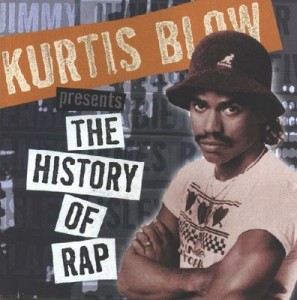

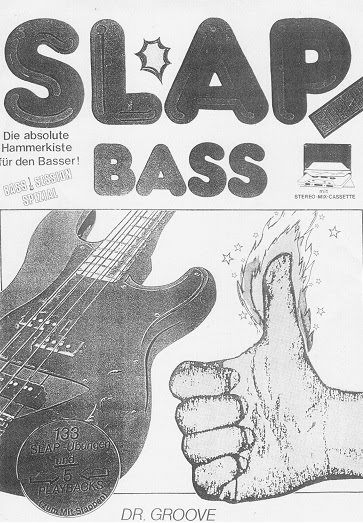

 Donald Duck Dunn | The Blues Brothers
Donald Duck Dunn | The Blues Brothers
